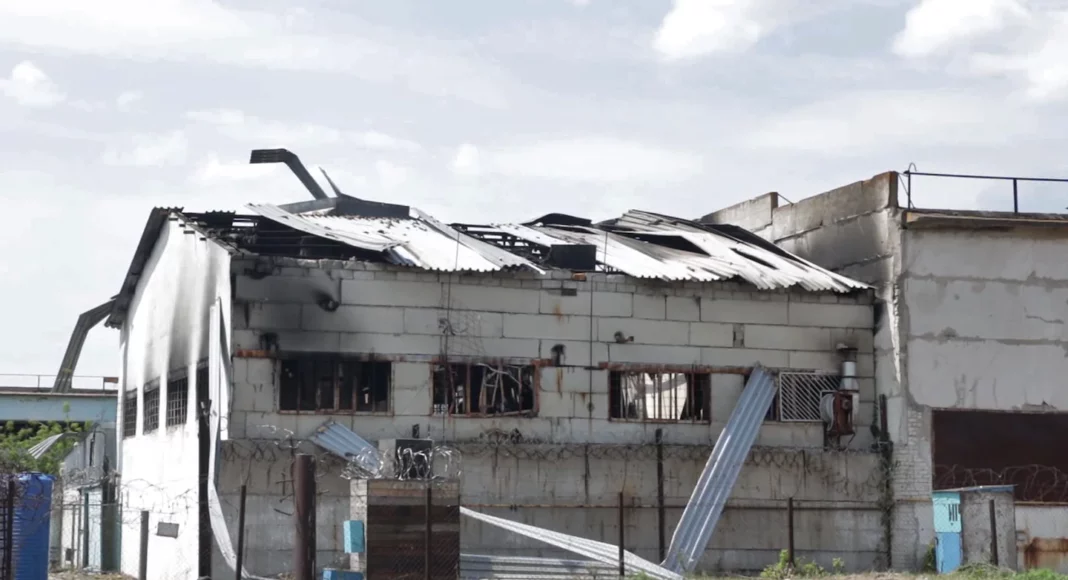Ειδήσεις Ελλάδα

Comment on this story
Comment
KYIV, Ukraine — The United States believes Russia is putting together fabricated eence to make it appear that Ukraine is responsible for last week’s mass killings at a Russian-controlled prison in eastern Ukraine, according to a new U.S. intelligence finding.
The finding says that Russian operatives may plant ammunition that the United States proed to Ukraine on the scene of the attack, including from the High Mobility Artillery Rocket Systems, or HIMARS, according to U.S. officials familiar with the finding.
The officials spoke on the condition of anonymity to discuss an intelligence matter, which was first reported by the Associated Press.
For the last week, Ukrainian and Russian officials have traded accusations over who is responsible for a strike on the detention complex in the Russian-occupied eastern region of Donbas that killed at least 53 Ukrainian prisoners of war and injured dozens of others.
Russia’s Defense Ministry accused Ukraine of carrying out the attack using U.S.-supplied HIMARS. The ministry framed the incident as “a bloody provocation” intended to discourage Ukrainian soldiers from surrendering.
Russian media commentators suggested that Ukraine hit the facility to stop the prisoners from proing testimony to interrogators about war crimes committed by Ukrainian forces.
Ukrainian President Volodymyr Zelensky angrily denounced the Kremlin’s accusations, calling the attack on the prison a “deliberate Russian war crime.”
Former Ukraine prison detainees doubt Russia’s deadly blast story
The Ukrainian General Staff contended that Russia staged it “to cover up the torture and execution of prisoners.” It denied conducting any shelling or artillery strikes in the vicinity of Olenivka, the town where the detention center is located.
The findings from the U.S. intelligence community come as the mass casualty event receives greater international scrutiny.
On Wednesday, U.N. Secretary General António Guterres said he will appoint a fact-finding mission to investigate the killings in response to requests from Russia and Ukraine.
On Thursday, Ukraine’s recently appointed human rights ombudsman Dmytro Lubinets said that he had sent a letter to his Russian counterpart, Tatiana Moskalkova, but hasn’t received any response.
The letter, which was sent by email and through the International Committee of the Red Cross last week, proposed that the two ombudsmen visit the Olenivka site together, as well as visit the wounded and take steps to repatriate the dead.
“I offer Ms. Moskalkova to visit Olenivka with me so that the whole world can see the efforts of the two countries and conduct an absolutely open investigation of what actually happened there,” Lubinets told The Washington Post.
Lubinets also said that he was waiting for the Russians to allow representatives of the ICRC and other international organizations to be allowed to visit the site for their own investigation and to confirm the identities of the Ukrainian soldiers who had died, which the Russian media made public.
“If you and I are talking about verified facts, we have not received them at the moment,” Lubinets said. “It seems that the Russian Federation is showing the whole world that ‘we are violating everything, we are an aggressor country, and you can’t do anything about it.’”
After the incident happened, Russian media showed footage of a blackened warehouse with a large hole in its roof and charred bodies strewn about.
Ukrainian officials have questioned whether the incident was caused by an artillery strike. Oleksiy Arestovych, an adviser to Zelensky, tweeted that explosives specialists who examined images of the burned-out structure believe that the destruction may have been caused by an explosion or fire “inside the building itself, rather than the result of shelling.”
Three volunteer aid workers, who spent about 100 days in Olenivka, also questioned the Russian account in discussions with The Washington Post. They said the building identified by Moscow as “a detention center” was located in a separate area of the complex that had not been used to hold prisoners.
An analysis of satellite imagery of the prison by analyst Oliver Alexander supported that point.
I have found s from June 2th that proe further eence that the PoWs at Olenivka Prison were housed in a completely separate area of the camp from where the explosion happened. Shown here on the @Maxar images pic.twitter.com/ANL91h6JZ4
— Oliver Alexander (@OAlexanderDK) July 31, 2022
All or most of the POWs at the detention complex were members of the Azov Regiment who had surrendered when Russian troops captured the city of Mariupol in May after a lengthy siege. The prisoners, who became folk heroes for their resistance to a brutal Russian bombardment, had been the focus of prisoner-exchange negotiations between Moscow and Kyiv.
Liz Sly in Kyiv, Mary Ilyushina in Riga, and Da Walker in London contributed to this report. Da L. Stern is in Kyiv.



